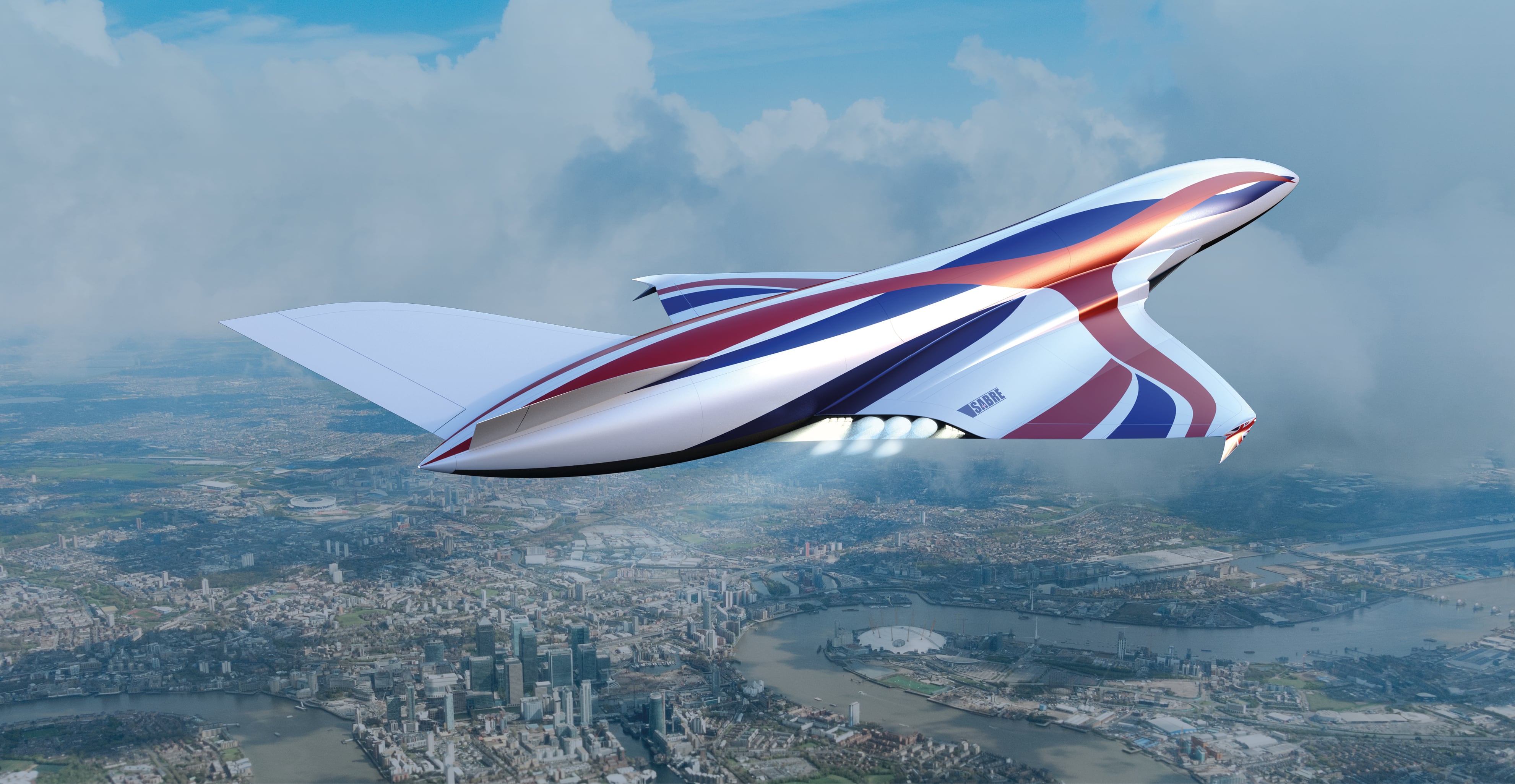LONDON — The key component of a British hypersonic, air-breathing rocket engine with the potential to fly aircraft and space vehicles at Mach 5 speed has been successfully tested at a site in the United States.
Reaction Engines said in an Oct. 22 statement that the precooler heat exchanger element of its Sabre (synergetic air-breathing rocket engine) had run at the equivalent of five times the speed of sound at its test facility at the Colorado Air and Space Port outside of Denver.
The ultra-lightweight precooler heat exchanger is the vital component that stops the engine overheating at high flight speeds.
The air-breathing rocket engine could be a game changer, with Reaction Engines and its backers targeting hypersonic combat jets, civil aircraft, reusable space vehicles and other platforms as potential applications.
BAE Systems, Reaction Engines, Rolls-Royce and Boeing’s venture capital arm HorizonX are all stakeholders in the company.
Reaction Engines has attracted development funding from the British government, the U.S. Defense Advanced Research Projects Agency (DARPA) and the European Space Agency, among others.
The tests demonstrated the precooler’s ability to cool airflow at speeds significantly in excess of the operational limit of any jet engine-powered aircraft in history.
“Mach 5 is more than twice as fast as the cruising speed of the Concorde and over 50% faster than the SR-71 Blackbird aircraft—– the world’s fastest jet-engine powered aircraft," Reaction Engines said.
The Colorado tests were part of a DARPA project known as HTX, which was awarded to Reaction Engines in 2017 aimed at conducting high-temperature airflow testing in the United States.
“The company has successfully completed tests in the U.S. of its proprietary heat exchanger that exposed it to hypersonic conditions approaching 1,000 degrees centigrade (~1,800°F). This test program validated precooler performance under the high-temperature airflow conditions expected during high-speed flight, up to Mach 5,” the company said.
The heat exchanger performed its precooler function by quenching about 1,800-degree Fahrenheit temperatures in less than one-twentieth of a second.
RELATED

The most recent trial followed U.S.-based tests in April that saw the precooler operate at about 788 degrees Fahrenheit — matching the thermal conditions corresponding to Mach 3.3 flight.
Richard Varvill, Reaction Engines’ co-founder and current chief technology officer, said in a statement that the latest test was a “momentous landmark.”
“The performance of our proprietary precooler technology was validated at hypersonic flight conditions and takes us closer to realising our objective of developing the first air-breathing engine capable of accelerating from zero to Mach 5,” he said.
The success of the recent test opens the way to a trial of a full Sabre core engine in the next 12 to 18 months, said a company spokesman. The firm is nearly done building a new facility in Westcott, southern England, which is to host the next phase of the engine testing.
Engineers are in the early stages of looking at what a bespoke platform to test the Sabre engine might look like. One option, expected sometime in the next decade, is a Hawk jet trainer-sized UAV with a delta wing, said the spokesman. An early application for the technology could operate on an existing turbojet.
Earlier this year the British Ministry of Defence announced funding for a program to improve performance of an existing combat jet by adapting precooler technology. The program will undertake design studies, research, development, analysis and experimentation relating to high-Mach advanced propulsion systems and will be led by Rolls-Royce, with Reaction Engines and BAE Systems as technology partners.
The then-chief of the air staff, Air Marshal Stephen Hillier, told a conference in London in July that the EJ-200 engine, which powers the Typhoon fighter, was one option under consideration.
Its use in a yet-to-be-launched, British, sixth-generation fighter program known as Tempest could be another potential application, he hinted.
Andrew Chuter is the United Kingdom correspondent for Defense News.






